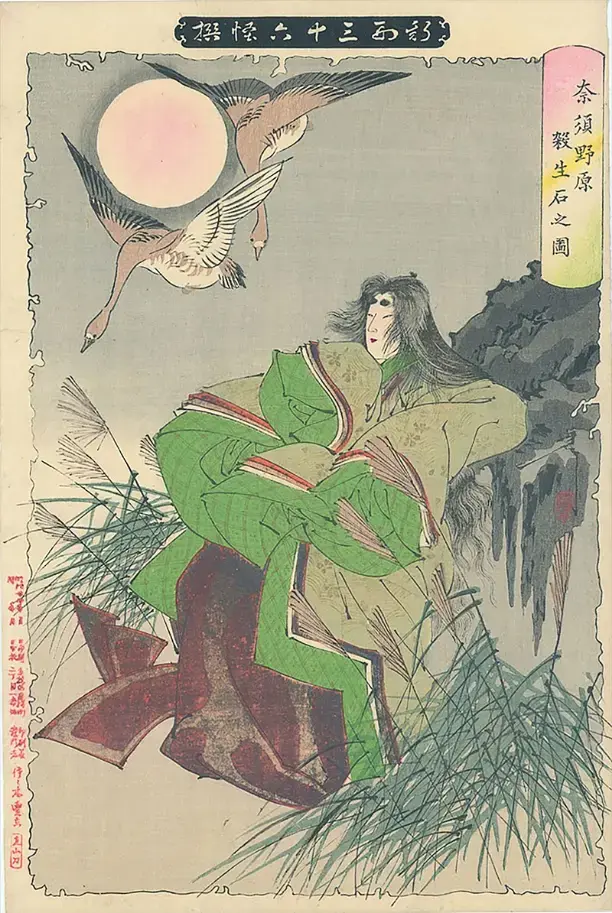Tamamo-no-Mae

Tamamo-no-Mae is one of Japan's most infamous supernatural figures, a mythological shape-shifting kitsune (fox spirit) whose tale embodies themes of deception, beauty, and supernatural revenge. Her legend spans centuries of Japanese folklore and continues to captivate audiences in modern media.
According to the Otogizoshi, a collection of Muromachi-period prose, Tamamo-no-Mae appeared at Emperor Konoe's imperial court as an unparalleled beauty. Despite her youthful appearance of merely twenty years, she possessed extraordinary qualities that defied natural explanation—her body emitted a perpetual fragrance, her garments remained pristine regardless of wear, and her intellect surpassed all scholars of the age. No question, whether concerning music, religion, astronomy, or any field of knowledge, could confound her.
The Emperor and his entire court fell under her spell, enchanted by both her physical perfection and intellectual brilliance. However, their adoration turned to horror when Emperor Konoe developed a mysterious, debilitating illness that baffled the court physicians. When traditional treatments failed, a court astrologer revealed Tamamo-no-Mae's true identity—she was actually a malevolent nine-tailed fox spirit who had infiltrated the court with designs on the imperial throne.
Upon this revelation, Tamamo-no-Mae vanished from the palace. Emperor Konoe dispatched his finest warriors, Kazusa-no-suke and Miura-no-suke, to hunt down the dangerous entity. After an extended pursuit, the fox appeared to Miura-no-suke in a dream, resuming her beautiful human form to plead for mercy. Despite her entreaties, Miura-no-suke remained resolute, and the following day on the Plain of Nasu, he slew the fox with a well-aimed arrow.
The fox's corpse transformed into the Sessho-seki (Killing Stone), a poisonous rock that brought death to any living creature that touched it. The vengeful spirit of Tamamo-no-Mae, now known as Hoji, haunted this stone until confronted by the Buddhist priest Genno. Through spiritual rituals and appeals to her salvation, Genno eventually persuaded the spirit to abandon her haunting and seek spiritual redemption.
The famed poet Matsuo Bashō mentioned visiting this legendary stone in his classic work "The Narrow Road to the Deep North" (Oku no Hosomichi), cementing its cultural significance. Remarkably, on March 5, 2022, the actual Killing Stone in Nasu split apart—an event that sparked speculation about Tamamo-no-Mae's release and rumors of impending calamity.
Tamamo-no-Mae's enduring legacy has inspired numerous artistic works, including the classical Noh drama "Sesshō-seki" and the Kabuki play "Tamamo-no-Mae" (also known as "The Beautiful Fox Witch"). Her character continues to appear in contemporary Japanese popular culture, including anime, manga, and video games, where she often retains her dichotomous nature as both alluring enchantress and dangerous supernatural being.


